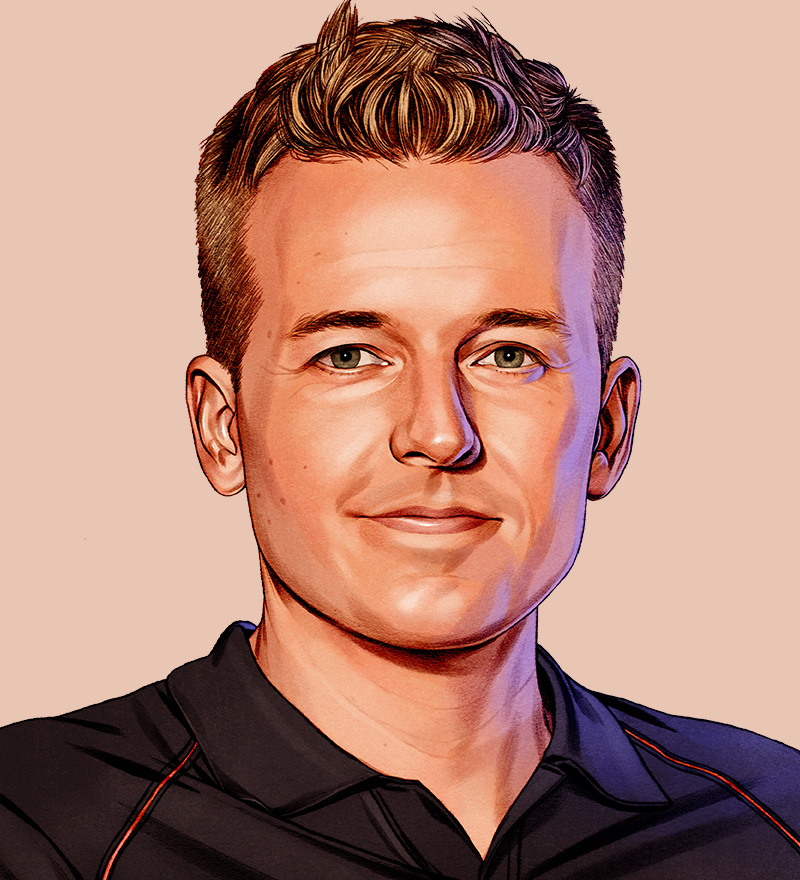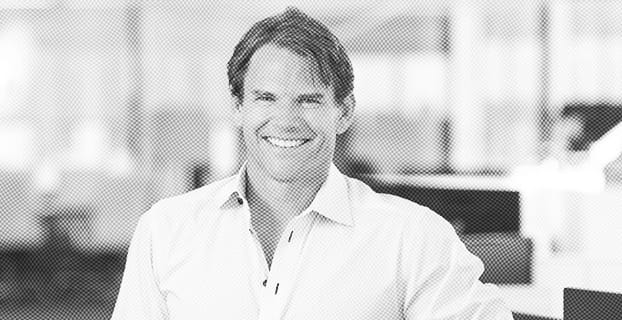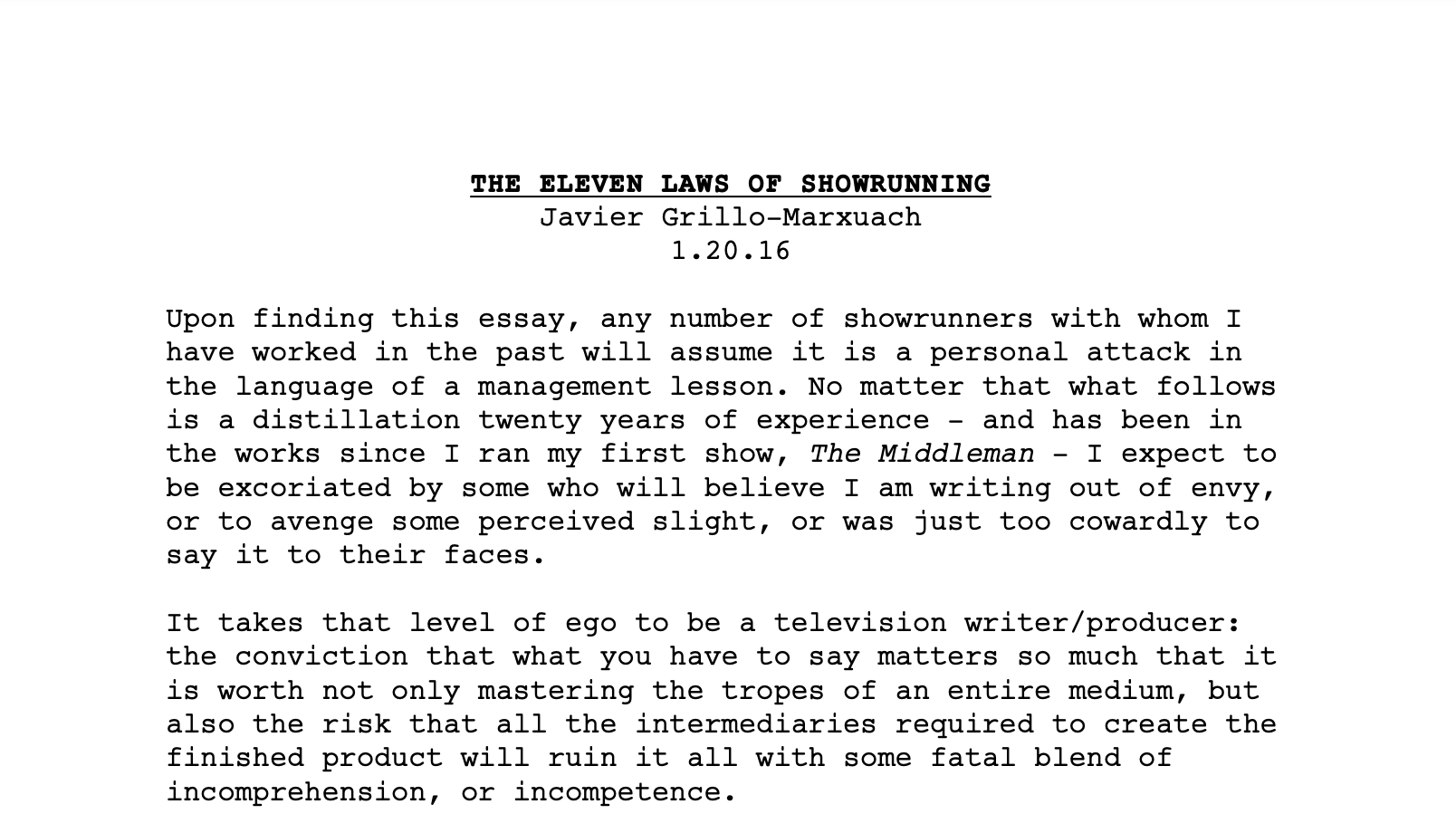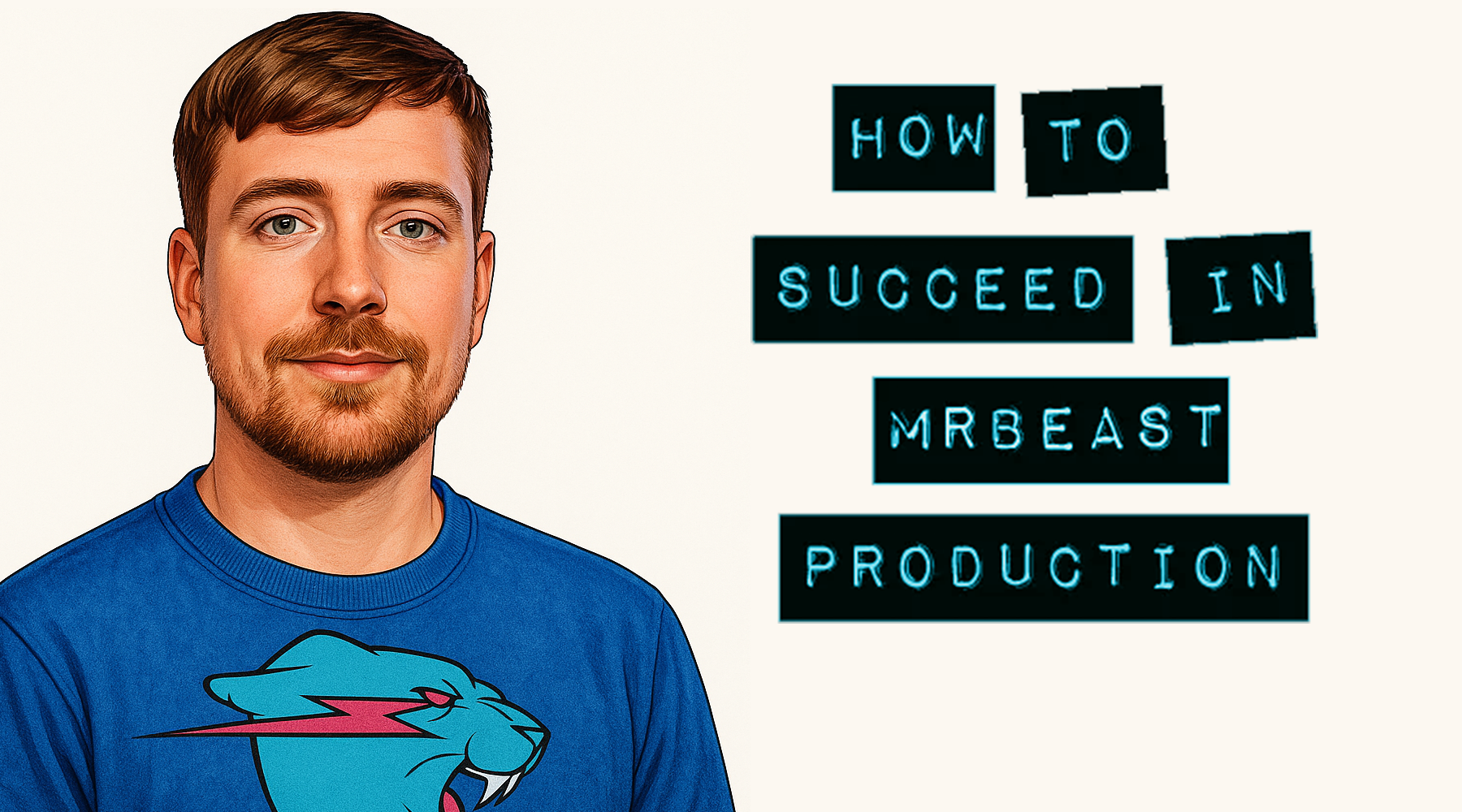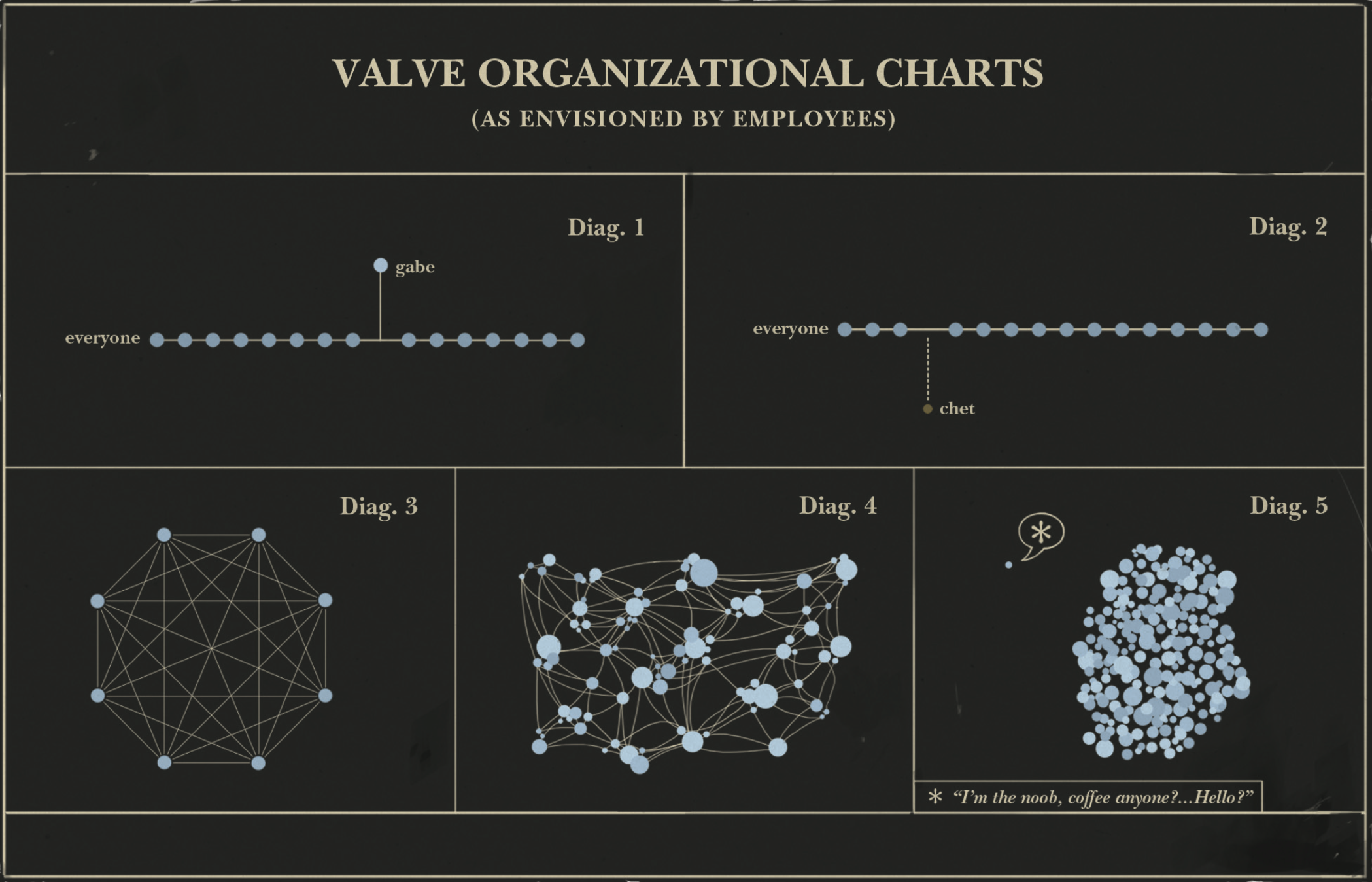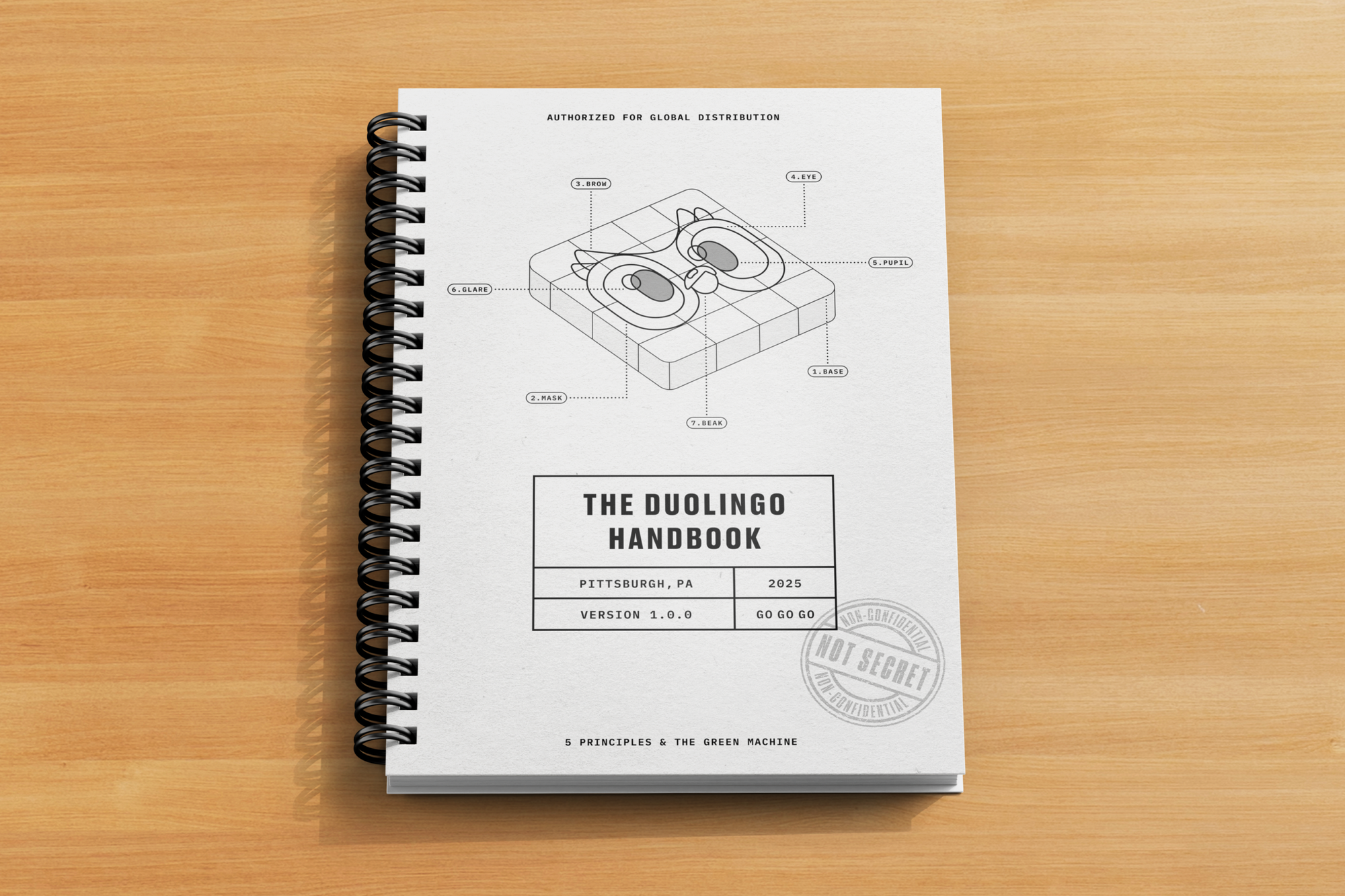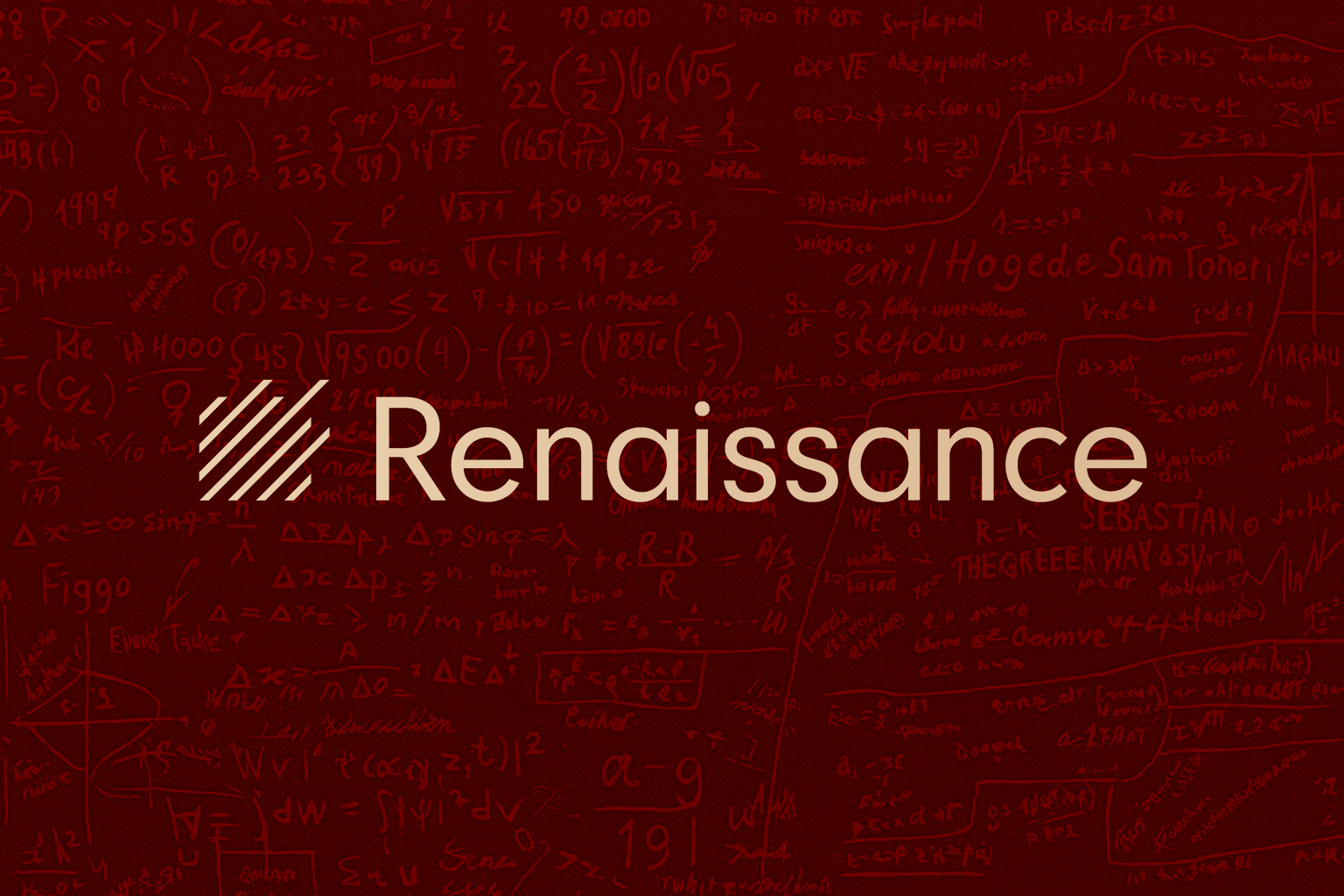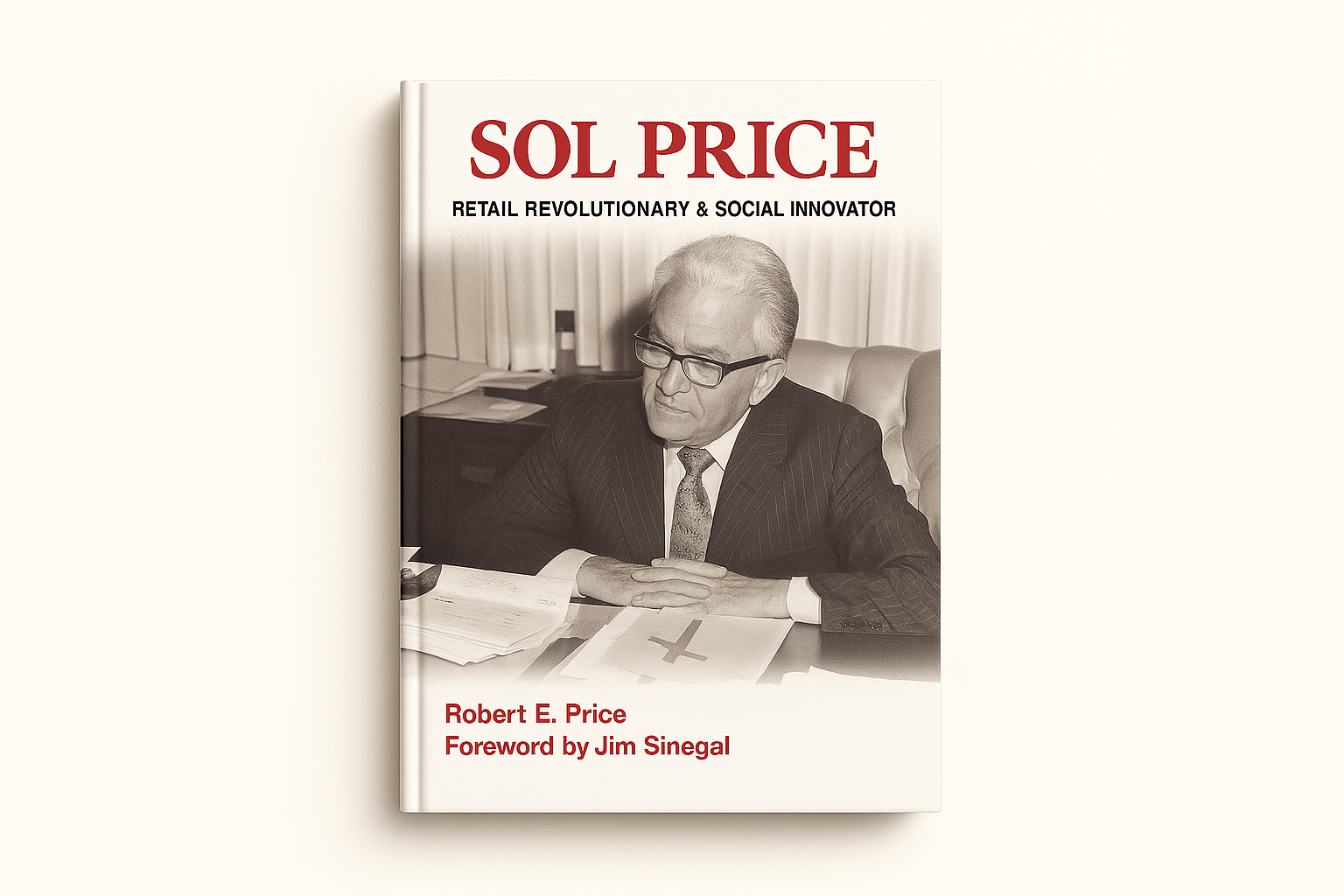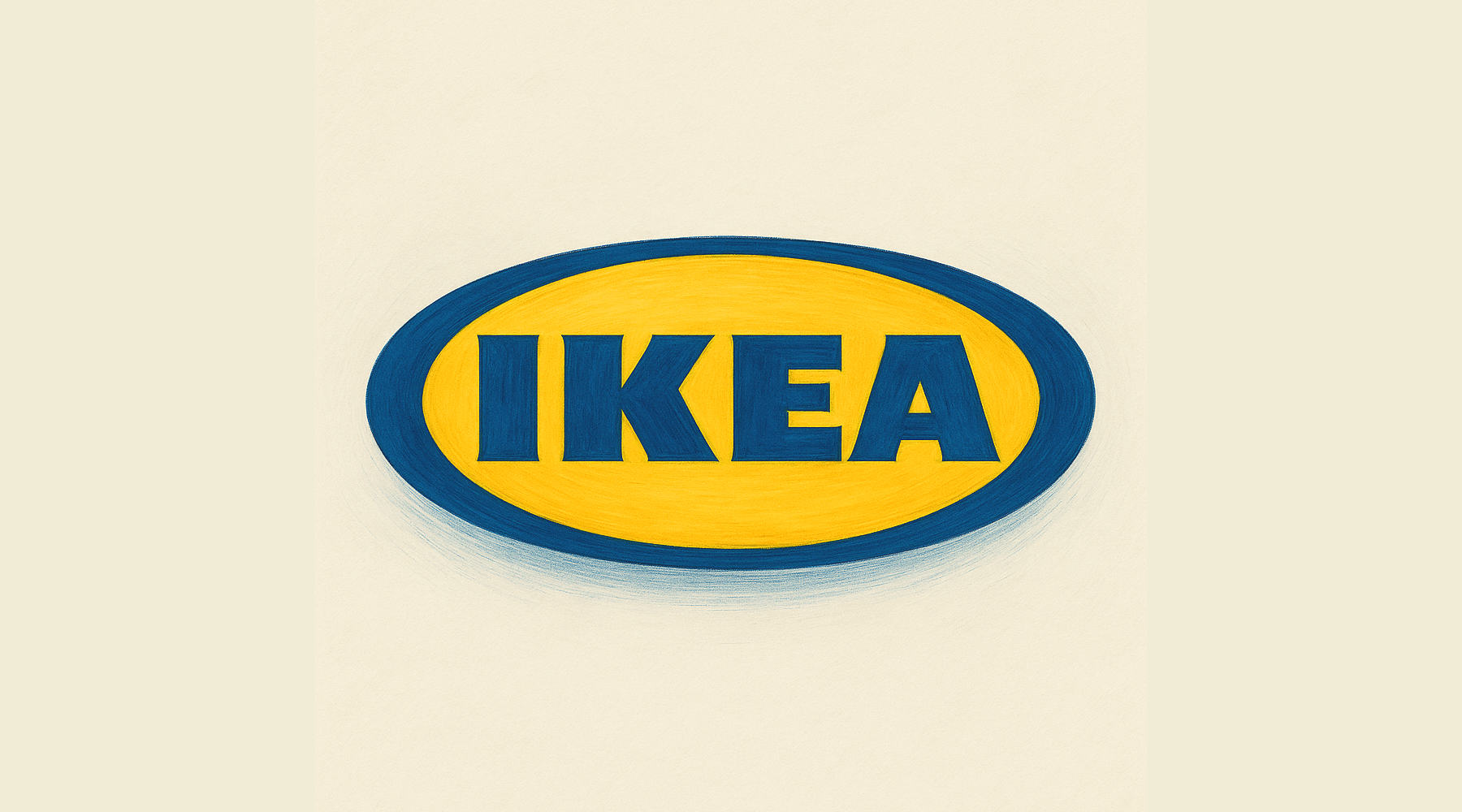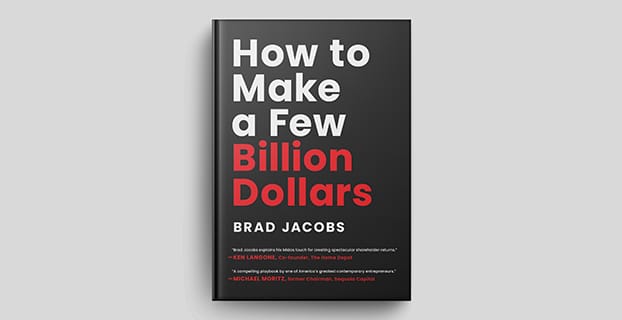In 2022, Graham Weaver, founder of Alpine Investors and a teacher at Stanford's Business School, was invited to give a “Last Lecture” to the Stanford GSB's graduating class. The prompt: “What would you say to students if this was the Last Lecture you ever delivered?”
He chose to talk about viewing your life as a Hero’s Journey where we are all the heroes of our story. He talked about how the inner battle of freeing yourself from fear, doubt, limiting beliefs. In the end, we get one life and it can be an epic adventure… if we give ourselves permission! This speech is part of Stanford Graduate School of Business' Last Lecture Series.
Graham Weaver's Last Lecture
Well, thank you for the awesome introduction. I appreciate that. I was super nervous and then you all started filing in and I was like, these are all my great friends that I've made over the last two years. And so I'm just so honored to be here and I am so grateful that you are entrusting me with this last lecture. It's something that I take, it's just an incredible honor means the world to me. So thank you for that. I want to say congratulations to all of you, not just on the last couple of years, but really on your whole lives, the 25 years or 30 years leading up to getting to Stanford and everything you put into it, the incredible intensity work, the sacrifices you made, the decisions you made, and the grit that you showed to get here. I hope you feel like you earn the seat that you're sitting in and you belong here, and I just hope you'll over the next couple of days appreciate really what you've done because it's really impressive. Give yourselves a big hand.
The last lecture I took very seriously, I said, this is my last lecture I'm ever going to give what I'm going to say. I'm going to try to tie in things we talked about in class, things I talked about in wellness, and I'm going to talk about even stuff we did during lunches and stuff like that. I'm going to do all that in 25 minutes. Let's see how it goes. So I turned 50 this year and as many of you who know have had me in class, I'm a pretty reflective person and I've thought about what have I learned over that time As Drake said, I've been on many journeys, had lots of failures and some stuff go well. And what I realized at the end of all that is that life is really the most challenging journey of all that we're all going to have and that all of you will have.
And that what I realized over 50 years is it's really an internal journey. It's one that you're going to really be wrestling with yourself over that time. And there's a quote that I love that summarizes this journey better than anything I could come up with from Michelangelo. And Michelangelo sculpted the David and he painted the Sistine Chapel. And one of his early works was this angel people had never seen this intricacy in detail in this angel before. And they asked him, how did you sculpt this angel out of this block of stone? And Michelangelo said, famously, I saw the angel in the marble and I carved until I set it free.
The reason that quote is so important and that it's my favorite quote is that we, all of us we're the angel in the marble and that we at our core are these beautiful, infinite, incredible beings. We have power beyond our wildest imagination and we're perfect just as we are. And that the real journey is to sculpt away the stone that we're in case. And most of the most constraining stone that we have were actually, it's self erected. It's the constraints we put on ourselves and it's things like, here's what my parents think I should do. Here's what my roommate's doing. I compare myself to this person and I compare myself unfavorably. I can't do this. I don't know how to do this. I'm not sure I'm going to make it. It might not work out. I might fail and I'm not ready. I'm not enough.
And really that's underneath a lot of that is I'm not enough. So that's the stone that we kind of place on ourselves. There's a subtle part of this quote that I want to make sure come that I make not subtle, which is that Michelangelo didn't sculpt the angel or the David by going out and finding a head and gluing it on and then finding wings and then welding those on the angel was already perfect. And that really, if I had a gift that could give to you, it would be for you to just give yourself permission to be your true selves over the course of your lives. That would be the gift that would give you, that's what I've learned over my 50 years is that when you give yourself that gift, you tap into this energy source and this joy and happiness and really power that you can't access any other way. You can't access it by trying to be someone else. So what I'm going to do today is take you on a little bit of a journey to hopefully help you unlock your potential, carve away that marble over the next 25 minutes or so, and I'm going to use my own story to tell you a little bit about this. So I grew up in a small town in Ohio, and actually my parents and my wife are here who are from that same town. And
I talk about my wife all the time in class and she's actually not snuffle up because she was real and she's here. And anyway, so I grew up in this small town and I had a lot of marble around me. I would've described myself as having pretty average abilities, athletic abilities, average intellect really. And I would say the town I was in was average and that was my identity. And so I had these pretty firm stone walls. And then when I was about 13, a lot of us, I wanted to feel like it mattered. I wanted to feel significant. And so in Ohio, one way to do that was through athletics. So I tried out for basketball and I got cut and I tried out for football and I was too small. So we had wrestling in Ohio, that was one of the sports we had.
And wrestling, you could be any weight class and they didn't have cuts. So I was like, alright, great. My first three years, seventh and eighth and ninth grade, really the only way to describe my career would've been forgettable, was just there was. And that by the way is a very optimistic description of those three years. So I got to ninth grade that summer and I said two words that I'd been saying my whole life to that point. I said, not me, not now. I'm not the right person, now's not the right time. I go on walks with some of you and you'll tell me about something you're excited about and I'll hear you say those words, not me, not now. I'm not ready. That summer though, two things happened for me. One was I bought a Sony Walkman and this was the 1980s version of your iPhone. And this was magical, just as magical as the iPhone was. And I was at the library one time checking out some music and there was this program and it said, think and Grow Rich. I was like, awesome.
Who doesn't want to think and grow Rich? Turns out that book wasn't at all about thinking and grown rich, it was about conquering your inner self. That's what it's actually about. It's a great book, Napoleon Hill. But I became addicted to these self-help, for lack of a better word, audio tapes, listened to Zig Ziglar, Tony Robbins, Dale Carnegie, Steven Covey. So I had a job over the summer that summer, every summer in Ohio, which was mowing lawns. I attach this Walkman and I'd plow it, put in Tony Robbins. And then mowing lawns is pretty straightforward. You walk in a line in the sun and then when you're done, you get to the end of the row, you turn around and you walk back. That's how pretty much I just taught you how to mow lawn. And I did this for six hours a weekend for my entire high school and I brainwashed myself with these tapes. Basically I was, my parents had just gone through a divorce and I wasn't really part of a friend group and athletics wasn't really working out for me. So this became something for me to grab onto. I was really impressionable and I grabbed onto these with everything I had. So I'll summarize. Literally, I added up the hours one time and it's thousands of hours I listened to. I'm going to summarize it for you for in about two minutes. You're welcome.
And the basic summary is that about 99% of people never actually figure out what they want. There's a lot of activity they spend all this time, they're running around, they're busy, they're going all these directions, but they actually never take the time to figure out what is it that they want. And they said, you will be the top 1% if you could just figure out what you want. Take that time. We're going to talk about that on today. The best exercise that I know to figure out what you want, I've done with many of you in class, but I'm sorry, I'm going to do it again because this is my last lecture, is imagine the following. Imagine you rub a magic lamp and a genie comes out and the genie says to you, I can't give you any wish, but what I can give you is that whatever you throw yourself into with your life, whatever you really commit yourself to, that that is going to work out amazingly well. It's going to be way harder than you think. It's going to take longer than you think. You're going to have some face plants, it's going to be tough. And when you fail, you're going to think that I've abandoned you, but I haven't. But it's going to be the journey of a lifetime. What would you wish for from that genie if you really had that power, if you really had that blessing? That's my favorite prompt that I've come up with and I've shared that obviously with many of you.
The second thing that happened that summer was there was this movie called Vision Quest. How many of you seen Vision Quest? Like two of you? Awesome actually. And my wife too. I've made her see many times. She raised her hand. Vision Quest is so for those of you who don't know, can't believe you haven't seen it. Vision Quest is a 1980s movie. It's kind of like Rocky for wrestling. That's the best way to describe it. There's this wrestler named Loudon Swain, and he decides he's going to cut down two weight classes and he's going to wrestle this defending state champion Brian shoot. And his buddy who's on kind of his friend that goes on this journey with him says loud. You know, you're on a vision quest. This is a vision quest. Well, this is a B movie probably by any standard except if you were a 15-year-old wannabe wrestler from Perrysburg, Ohio, in which case it was my anthem. And I still to this day have seen that movie more than any other movie I've seen. I can say pretty much every line in the movie.
So anyway, those two things conspired and I go back to wrestling my 10th grade year and I'm sitting, I'm standing in the wrestling room and I'm looking up at the wall, we're having a pizza party in the fall, and I'm looking up at the wall and there's a list of all the starting wrestlers and I'm not one of them. And my buddy comes up and he puts his arm around me and he says, huh, Weaver only place you can make that weight make the starting lineup is at 125 pounds. And he punches me in the gut, literally and figuratively punches me in the gut to give you an idea. Well anyway, I look at this and I decide I have a decision to make and I'm eating this pizza, pizza and I throw the pizza in this trash. And I had this ceremonious moment where I said, alright, I'm going to go on my own vision quest.
I'm going to drop to 125 pounds, make the starting lineup. Now this story does not end the way that vision quest does. I do make the weight, by the way, just give you a sense of 125 pounds. I was at the same height as I am now. I weigh 180 5 right now. So when I decided to cut the weight, I was one 50 and then I cut another 25 pounds from that. So it was to this day, one of the hardest things I've ever done. But that moment when I threw the pizza, pizza in the trash would turn out to be the turning point in my life. And the reason is that I basically drew a line. I didn't do this figuratively, but I did this kind of in my head. I drew this line here and this line on this side of the line is where I was.
And on the other side of the line are the things that I really wanted, the thing I wanted to be the goals that I had. And up until that point in my life, I'd always been tip a toe and putting my toe over on the other side of the line. But I really never believed it. I never committed, I never stepped fully on the other side. And that was the first time in my life where I knew when I threw that piece of pizza away that this wasn't going to be something I was going to do for a week. It wasn't something I was going to do for a month. This is something that I was committed and I was going all in and I did, and my mom can attest to that.
So there are two things. My story today is I'm going to share five things with you, five ways that you can free yourself from the marble. And I uncovered two of them that I'll highlight for you in that story. The first one is that these walls that we have, that we have around us, and we view them as stone and the most dangerous when we don't even realize that we have them. And those are the stories we tell ourselves, the assumptions we make, the things that we say we can and can't do. The most constraining walls that you will have are the ones that you have made in your mind for yourself. Those are the ones that'll cause you the most problems. And those walls are not actually made of stone, but if you push them, they're malleable. And one way to push them hard is to commit to step over and not look back.
And then those walls will start to give and they'll start to yield and you can push and they'll move. And when I pushed on this wall about first I had a wall that was my athletic ability. I have a wall of intelligence, my wall of who I fit in, my friends, all that. But I started pushing on this athletic wall and it moved and it gave, eventually I cleared it out altogether and as Drake said, I became captive of a national championship rowing team having never rode before. And I realized there was no wall there at all. There's walls. I was erecting. And the same was true with my view of my identity for intelligence and many other things is that they weren't walls at all. So my first takeaway is almost any wall that you can imagine will yield to you with time, it will yield to you when you're committed, it will yield to you at your best.
There's almost no wall that won't yield. Second takeaway I have is has to do with your identity. We all act consistent with our identity. So we're going to behave today based on how we perceive ourselves. What is our identity? So where's your identity come from? Well, your identity comes from your subconscious mind and your subconscious 95% of all the things you think are in your subconscious mind. And so your subconscious is really powerful. Another thing I learned from these tapes, 95% is your subconscious mind. And you've heard the expression, we only use a fraction of our minds. How many of you have heard that expression? Right? We only use a little bit of, so I would say it differently. I would say only a small fraction of our mind is working for us and the other 95%, it's all over the place, and more often than not, it's working against us.
So our identity comes from when our subconscious is picking up cues all the time. It says like, you're not that good at this. You're not that good at that. You're not comparing well to this person, man, I failed at this. Oh, I'm not as good as this. I'm not. And that's our identity coming. So really our identity is coming from our past. What happened is I started developing these genie goals and having something, having something I actually wanted. And one of the things these tapes would say is visualize it, write it down, talk about it all the time. And in a very short period of time, my identity started becoming my destination. It'll happen like that. So if you want to free yourself from the marble, consider having your identity be where you want to go, not where you've been. It'll completely change the way you look at the world.
I want to go back to the movie vision quest for a second. So vision quest follows the arc of a very common architecture of stories. Joseph Campbell identified this arc and he called it the hero's journey. So the hero's journey goes something like this. It says, once upon a time, once upon a time there was a hero, and that hero felt something inside of them. They felt that they had this power that they were ready to give to the world, and yet this hero lived in this ordinary world and they'd experienced the power at times, but not fully. They weren't really a hundred percent able to express this. And then the story goes on and says, and then one day until one day something changed for that hero, they heard some call to adventure, some call to action, and the hero's reluctant at first. They're not sure if they should answer this call.
And I want to argue, this is where many of you are right now. You are, make no mistake, you are the hero. You have this power inside of you that you've felt that is there. You've had this power that you've expressed at times in your life that is incredible and you've felt it. And I know from teaching you having lunches, coffees, drinks, I know that each of you also is hearing a call. The call could be that there's a problem that breaks your heart that you want to be a part of the solution. The call could be that there's something you want to introduce to the world, a product that technology, something like that. The call, it could be something more subtle. The call is your call. It's not what I think. It's not what your neighbor thinks. It's not what your roommate thinks. It's what you think your call could be that you want to be a teacher.
The call could be you want to be an actor or a writer or whatever it is. Sometimes for some of you it's really loud that call exactly what it is. And for some of you it's a whisper. But you got to listen to that call. You got to hear that. And many of you are reluctant right now. You're in the reluctant hero part of the story, at least from spending time with you. I was the reluctant hero too. When I graduated, if you would've asked me anytime in the two years I was at Stanford, what are you going to do? I said, I'm going to go build a firm that's going to unleash people and it's going to be built around talent. That's what I said I was going to do. And then when it came time to graduate, I listened to all my fears and my doubts and my limiting beliefs, and I kind of took this, I had this decision to make between these two jobs or doing what I really wanted to do.
I made a decision the way a lot of you make a decision, which is like this. I made it in my head and I said, well, here's a list of the pros and here's a list of the cons and here's the good things and here's the bad. I even had a spreadsheet of expected value and this is the way I know you make decisions. I talked to you about it and you all kind of go like this. And then I asked 37 different people for advice thinking the 37th was going to have my answer for me. I'm usually the 37th on your list too, by the way.
So I made this decision and then of course with all this stuff, I went to the well-lit, well-worn path because that seemed more logical and more straightforward. And that's where all that analysis led me. I went to a firm and when I showed up, honestly, a little bit of me died and a little bit of me died that each day I was there until, so I kind of was like that hero looking out the window and I'm kind of waiting for someone to come rescue me and take me on this journey. But after a while, I stopped looking out the window and I just became my environment. Their values became my values, their goals became my goals once again in my life I had said, not me, not now, not me, not now. I had another catalyst come in the form of a very tragic event, which is a close friend of mine. He woke up like all of us did today thinking he had his whole life in front of him. And that was his last day. And I realized that I don't know what I was putting off. I don't know when the time was. If it's not now, then when's it going to be? And I told myself at that time I was never going to say the words, not me, not now again. And I don't know that I have said it since then.
The third thing to think about in unleashing yourself from the marble is there's another way to make a decision, which is not in your head, but it's in your heart. And there's a quote, which is you can't solve the problems of the mind with the mind. You can't solve your mind with your mind, but your answer is most likely in your heart. So the way to make that decision is to really silence your mind and just think what's true for you. What's real? Give yourself a space time. What's meaningful for you? What's the impact you want to have? What would you do if you knew you weren't going to fail? And give yourself the space to think about that. And my guess is you already know your answer. You're just not giving yourself permission. So the third thing is make your decisions with your heart and not your head and give yourself permission. Nobody's coming to your rescue.
I thought I'd talk quickly about the journey itself. Some of you have started your journey, some of you're going to start later. Some of your journeys are completely different than my journey, but I'll tell you a little bit about my journey because it's going to have some things in common with yours. I started my firm and it took me a year to raise a fund. We raised way less than I thought. It took way longer than I thought, but we got going. So we're in business. This was the first time I was going to buy companies not using credit card debt, but I actually had some real money in investors. I was excited and then promptly lost money on five of my first eight deals and lost money on my first fund. I had probably 10 classmates invested in my fund. I lost them money.
I was embarrassed. I had at my fifth reunion, I had a friend put his arm around me and say, Graham, during the greatest wealth creation of all time, this was the dotcom era. You're buying stupid label printing companies. And I remember thinking, yeah, that's pretty much accurate. Not only am I buying stupid label printing companies, it's not really going that well. So it wasn't good. But we started clawing our way back, and then we got a little bit better. And then bam, we got flattened by the recession, didn't raise a fund for three years. And for the second time, I drained my savings, keeping payroll going.
So this is my inspiring entrepreneurship story. But the point of the story is that every journey using the hero journey analogy, think of like Yoda and Star Wars or Princess Bride. The journey ends up in the swamp. You will end up in this swamp at some point, and the swamp is where you're mucking around in the mud and you're not sure how to get out of the swamp. You don't know if you're going to get out of the swamp or when, and you feel like you have failed. This swamp feels like failure is what it feels like. But I want to just talk about failure for one second. I'm going to tell you that none of you fear failure and you're going to be like, no, Graham, I pretty much fear failure. But you don't. What you fear is underneath failure, which is you fear what happens next.
You fear that you can't handle failure, that whatever comes after that, you're not going to be able to handle it. But then if you think back to your lives, how many of you have had something go really wrong that you would've categorized as a failure? Every single one of you? And you know what happened? You got up, you kept going, you're here and you're about to graduate from Stanford business school no less. So you can handle failure. Every single person can handle failure, and that's really what you fear. So in this swamp, this one quote is the thing that kind of helped me a lot is this quote by Vince Lombardi who said he was the coach of the Green Bay Packers, and he said The Green Bay Packers never lost a football game, but there were a couple occasions where we ran out of time.
I love that quote. But the best thing about the swamp is you're in control of the most powerful part and the most powerful tool that you need, which is you have the clock, you're the one who gets to call the game and you don't have to call it until you're winning. So my four takeaway is the journey you'll be on. We'll go through the swamp and just recognize that that's normal. When you're in the swamp, realize everyone else has been in the swamp too. Realize failure is not fatal, failure is not final. You can handle failure and ultimately you control the clock as Winston Churchill says, if you're going through hell, keep going. So that's my four takeaways. So I'll summarize my takeaways and then I'll leave you with one final thought. The first one is the walls that are erected around you the most constraining ones are the ones you put on yourself and that those walls will move.
Those walls are not as stone at all. They're very, very malleable, but they'll move if you throw yourself in with commitment, and almost any wall will yield to you at your best. Second is consider your identity. You'll behave consistent with your identity. So start to think about your identity as your destination, not your past. Third, make your decisions from your heart. In 50 years, I've never made a bad decision from my heart. Make your decisions from your heart and not your head. Nobody's coming to your rescue. No one's going to make that decision for you. No one's going to tell you it's time. No one's going to tell you you're ready. You're the only one who can give yourself permission. Just you. But guess what? You're the only one who needs to give you permission too. And remember, the journey will go through the swamp. When you're in the swamp, give me a call. I I'll help you out of the swamp, but it's going to be normal. And failure is not fatal. Failure is not final. You control the clock.
So I'll just end with a story. My story is about my executive coach named Tom. So I'm in the middle of the swamp waist deep. This is right in the time of the recession. And I hired this coach named Tom. So here's my introduction to Tom. I'm going to reenact it here. I'm like, Hey, Tom, I'm Graham, nice to meet you. Tom gives me this blank look. I'm like, I always say this because Graham's kind of weird. I always say Graham like Graham cracker. So maybe it's a nervous thing. This is Tom. Tom says, Graham, what if you suddenly realized you were put on this earth to do something special?
So Tom, right? So good to meet you, Tom. That was literally our introduction. And then we talked for two years and every single meeting we had at some point, sometimes multiple points. Graham, what if you suddenly realized you were put on this earth to do something special? And this one time we were in San Francisco, we're at the deli and there's like three people in front of us, and I'm like on my phone, Tom's like, Graham, what if you suddenly realized you were put on this earth to do something special? So I'll ask all of you, what if you suddenly realized, suddenly realized you were put on this earth to do something really special?
Think about that. And I want to draw a line for you, and you can do this tonight at home or you can when you have some time. But there's a line here and you're on this side of the line. On this side of the line. It's really familiar. You've been here before. You have these thoughts from the past. You have an identity. You're very comfortable in this area right here on this side of the line. You probably have some walls in your head. You're making analytical decisions, but there's a line. And over here is really what you want on the other side. It's what you really want. And you know that. And only you would know that and your heart knows that. And over here is you realizing that the hero's journey isn't just the best architecture of a story, but it's the architecture of your life.
It's the best story you could write with this one life we got. And you're the hero of that journey. You get to be the hero of your story. And over here on this other side of this line is this call to adventure. And you've been called to, if you really listen and you really pay attention, there's a call over here. And finally on this side of the line is going back to what Michelangelo said. That is you realizing that you already have everything that you need and that you already are everything that you need and that you're enough, that you're enough. Well, I finally realized with Tom, I would go back and forth thinking, is he a little crazy or is he the messiah? Sometimes in the same conversation. And I finally realized what he was saying. He wasn't saying, Tom wasn't asking me if I was put on this earth to do something special. He was asking me what would happen if I realized that? So class of 2022, what would happen if you that and stepped over this line. Thank you.
Who is Graham Weaver?
Graham Weaver is founder and managing partner of Alpine Investors, a people-driven private equity firm that invests in software and services businesses. With over 20 years of experience in private equity, Graham founded Alpine based on the belief that exceptional people create exceptional businesses, a PeopleFirst philosophy that guides the firm’s choices today. When he’s not inspiring growth at Alpine, Graham teaches a top-rated strategic management course at Stanford’s Graduate School of Business (GSB).
Graham is on a mission to help people and businesses achieve their goals, no matter the scale. While mowing lawns in suburban Ohio during high school summers, he loaded up his trusty Walkman with self-help tapes and began a lifelong passion for helping others realize their true potential.
He earned an MBA from Stanford University and a BS in Engineering from Princeton University, where he graduated with highest honors and was captain of the national championship lightweight crew team. Graham lives, works, and writes from Corte Madera, CA.


